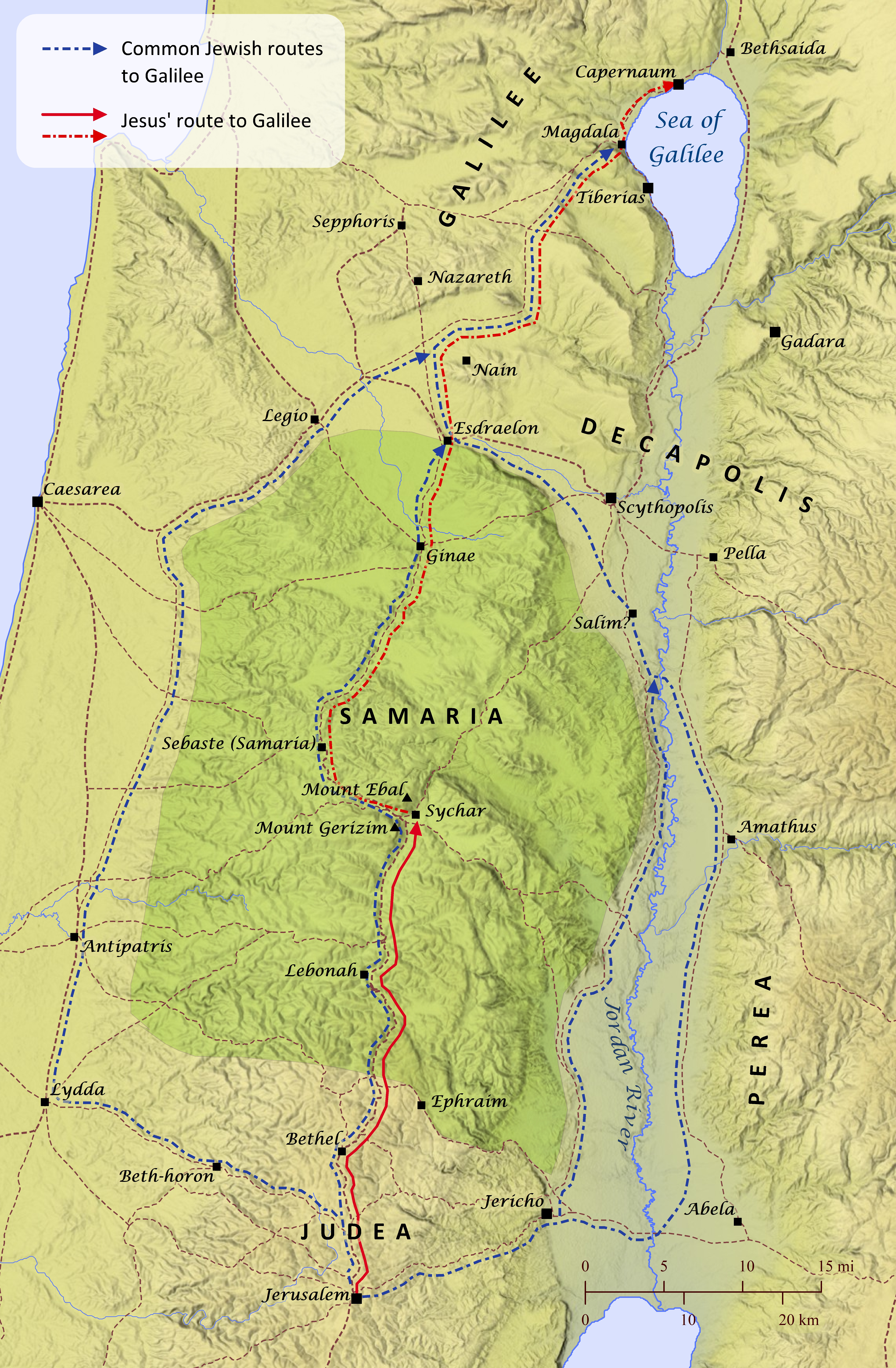
Jesus Speaks with a Woman in Samaria
John 4
As the story of Jesus’ encounter with a Samaritan woman demonstrates, even simple geography–the divine arrangement of places where God leads us in life–can position us for fruitful ministry if we are willing to reach out to those along our journey. This episode in Jesus’ ministry occurred immediately after Jesus had cleared the Temple in Jerusalem and was gaining even more followers than John the Baptist (John 2:13-25; 4:1-3). Likely wanting to avoid a direct clash with Jewish leadership so early in his ministry, Jesus chose instead to return to Galilee. The most direct route from Jerusalem to Galilee passed through Samaria, and, as the Jewish historian Josephus notes, this was the route normally chosen by most Jews at the time (Antiquities of the Jews, Book XX:6). The city of Samaria (renamed Sebaste by Jesus’ time) was originally the capital of the northern kingdom of Israel, but in 722 B.C. the Assyrians exiled many Israelites to other parts of their empire and relocated other foreign peoples in Israel (2 Kings 15:29; 17:1-24; 1 Chronicles 5:26; also see “Israelites Are Exiled to Assyria”). This diverse population then developed a new religion that mixed elements of Israelite worship with pagan worship (2 Kings 17:24-41), and centuries later they set up their own temple on Mount Gerizim. Because of their mixed ancestry and religion, Samaritans were often detested by many Jews (John 4:9), and hostilities periodically erupted between Jews and Samaritans. Jesus himself would later be refused entry into Samaria while traveling from Galilee to Jerusalem (Luke 9:52-56; also see “Jesus’ Final Journey to Jerusalem”), and Josephus notes that about 20 years after this time a number of Galileans were killed by Samaritans as they attempted to make their way to Jerusalem through the village of Ginae. Probably because of these hostilities, some Jews preferred to take alternate routes that bypassed Samaria. Still other Jews chose these routes to avoid even associating with Samaritans. Jesus, however, appears to have chosen the more direct route through Samaria, which led him to the village of Sychar–right next to the ancient site of Shechem and Mount Gerizim. There he met a Samaritan woman by a well and spoke to her about God’s gift of living water for her soul. He also revealed supernatural knowledge about her, so she asked him whether Mount Gerizim or Jerusalem was the proper place to worship. Jesus gently rebuked her belief in Samaritan worship practices, but he also assured her that one day the physical location of worshipers will no longer matter. Instead, all true believers will worship God in spirit and truth. When Jesus revealed to the woman that he was the Messiah, she left her water jar and told the townspeople about Jesus. Meanwhile, Jesus’ disciples returned, and Jesus urged them to recognize that the fields were ripe for harvesting, presumably meaning that many Samaritans were ready to believe in him. Because of the Samaritan woman’s testimony, many of the townspeople believed in Jesus and persuaded him to stay there two more days before returning to Galilee. Years later the apostle Philip found fruitful ministry among the Samaritans as well, and many came to faith in Jesus (Acts 8:5-13; also see “The Ministries of Philip and Peter”).